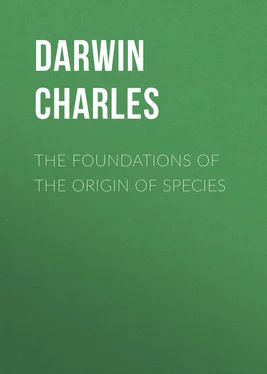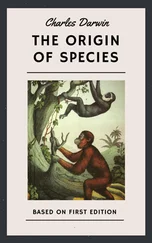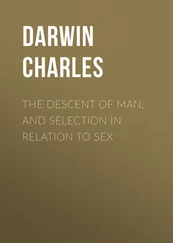Charles Darwin - The Foundations of the Origin of Species
Здесь есть возможность читать онлайн «Charles Darwin - The Foundations of the Origin of Species» — ознакомительный отрывок электронной книги совершенно бесплатно, а после прочтения отрывка купить полную версию. В некоторых случаях можно слушать аудио, скачать через торрент в формате fb2 и присутствует краткое содержание. Жанр: foreign_antique, foreign_prose, на английском языке. Описание произведения, (предисловие) а так же отзывы посетителей доступны на портале библиотеки ЛибКат.
- Название:The Foundations of the Origin of Species
- Автор:
- Жанр:
- Год:неизвестен
- ISBN:нет данных
- Рейтинг книги:3 / 5. Голосов: 1
-
Избранное:Добавить в избранное
- Отзывы:
-
Ваша оценка:
- 60
- 1
- 2
- 3
- 4
- 5
The Foundations of the Origin of Species: краткое содержание, описание и аннотация
Предлагаем к чтению аннотацию, описание, краткое содержание или предисловие (зависит от того, что написал сам автор книги «The Foundations of the Origin of Species»). Если вы не нашли необходимую информацию о книге — напишите в комментариях, мы постараемся отыскать её.
The Foundations of the Origin of Species — читать онлайн ознакомительный отрывок
Ниже представлен текст книги, разбитый по страницам. Система сохранения места последней прочитанной страницы, позволяет с удобством читать онлайн бесплатно книгу «The Foundations of the Origin of Species», без необходимости каждый раз заново искать на чём Вы остановились. Поставьте закладку, и сможете в любой момент перейти на страницу, на которой закончили чтение.
Интервал:
Закладка:
The division of the Essay into two parts is maintained in the enlarged Essay of 1844, in which he writes: “The Second Part of this work is devoted to the general consideration of how far the general economy of nature justifies or opposes the belief that related species and genera are descended from common stocks.” The Origin of Species however is not so divided.
We may now return to the question of the date of the Essay. I have found additional evidence in favour of 1842 in a sentence written on the back of the Table of Contents of the 1844 MS. – not the copied version but the original in my father's writing: “This was written and enlarged from a sketch in 37 pages 23 23 On p. 23 of the MS. of the Foundations is a reference to the “back of p. 21 bis”: this suggests that additional pages had been interpolated in the MS. and that it may once have had 37 in place of 35 pp.
in Pencil (the latter written in summer of 1842 at Maer and Shrewsbury) in beginning of 1844, and finished it « sic » in July; and finally corrected the copy by Mr Fletcher in the last week in September.” On the whole it is impossible to doubt that 1842 is the date of the earlier of the two Essays.
The sketch of 1842 is written on bad paper with a soft pencil, and is in many parts extremely difficult to read, many of the words ending in mere scrawls and being illegible without context. It is evidently written rapidly, and is in his most elliptical style, the articles being frequently omitted, and the sentences being loosely composed and often illogical in structure. There is much erasure and correction, apparently made at the moment of writing, and the MS. does not give the impression of having been re-read with any care. The whole is more like hasty memoranda of what was clear to himself, than material for the convincing of others.
Many of the pages are covered with writing on the back, an instance of his parsimony in the matter of paper 24 24 Life and Letters , i. p. 153.
. This matter consists partly of passages marked for insertion in the text, and these can generally (though by no means always) be placed where he intended. But he also used the back of one page for a preliminary sketch to be rewritten on a clean sheet. These parts of the work have been printed as footnotes, so as to allow what was written on the front of the pages to form a continuous text. A certain amount of repetition is unavoidable, but much of what is written on the backs of the pages is of too much interest to be omitted. Some of the matter here given in footnotes may, moreover, have been intended as the final text and not as the preliminary sketch.
When a word cannot be deciphered, it is replaced by: – «illegible», the angular brackets being, as already explained, a symbol for an insertion by the editor. More commonly, however, the context makes the interpretation of a word reasonably sure although the word is not strictly legible. Such words are followed by an inserted mark of interrogation «?». Lastly, words inserted by the editor, of which the appropriateness is doubtful, are printed thus «variation?».
Two kinds of erasure occur in the MS. of 1842. One by vertical lines which seem to have been made when the 35 pp. MS. was being expanded into that of 1844, and merely imply that such a page is done with: and secondly the ordinary erasures by horizontal lines. I have not been quite consistent in regard to these: I began with the intention of printing (in square brackets) all such erasures. But I ultimately found that the confusion introduced into the already obscure sentences was greater than any possible gain; and many such erasures are altogether omitted. In the same way I have occasionally omitted hopelessly obscure and incomprehensible fragments, which if printed would only have burthened the text with a string of «illegible»s and queried words. Nor have I printed the whole of what is written on the backs of the pages, where it seemed to me that nothing but unnecessary repetition would have been the result.
In the matter of punctuation I have given myself a free hand. I may no doubt have misinterpreted the author's meaning in so doing, but without such punctuation, the number of repellantly crabbed sentences would have been even greater than at present. In dealing with the Essay of 1844, I have corrected some obvious slips without indicating such alterations, because the MS. being legible, there is no danger of changing the author's meaning.
The sections into which the Essay of 1842 is divided are in the original merely indicated by a gap in the MS. or by a line drawn across the page. No titles are given except in the case of § VIII.; and § II. is the only section which has a number in the original. I might equally well have made sections of what are now subsections, e. g. Natural Selection p. 7, or Extermination p. 28. But since the present sketch is the germ of the Essay of 1844, it seemed best to preserve the identity between the two works, by using such of the author's divisions as correspond to the chapters of the enlarged version of 1844. The geological discussion with which Part II begins corresponds to two chapters (IV and V) of the 1844 Essay. I have therefore described it as §§ IV. and V., although I cannot make sure of its having originally consisted of two sections. With this exception the ten sections of the Essay of 1842 correspond to the ten chapters of that of 1844.
The Origin of Species differs from the sketch of 1842 in not being divided into two parts. But the two volumes resemble each other in general structure. Both begin with a statement of what may be called the mechanism of evolution, – variation and selection: in both the argument proceeds from the study of domestic organisms to that of animals and plants in a state of nature. This is followed in both by a discussion of the Difficulties on Theory and this by a section Instinct which in both cases is treated as a special case of difficulty.
If I had to divide the Origin (first edition) into two parts without any knowledge of earlier MS., I should, I think, make Part II begin with Ch. VI, Difficulties on Theory . A possible reason why this part of the argument is given in Part I of the Essay of 1842 may be found in the Essay of 1844, where it is clear that the chapter on instinct is placed in Part I because the author thought it of importance to show that heredity and variation occur in mental attributes. The whole question is perhaps an instance of the sort of difficulty which made the author give up the division of his argument into two Parts when he wrote the Origin . As matters stand §§ IV. and V. of the 1842 Essay correspond to the geological chapters, IX and X, in the Origin . From this point onwards the material is grouped in the same order in both works: geographical distribution; affinities and classification; unity of type and morphology; abortive or rudimentary organs; recapitulation and conclusion.
In enlarging the Essay of 1842 into that of 1844, the author retained the sections of the sketch as chapters in the completer presentment. It follows that what has been said of the relation of the earlier Essay to the Origin is generally true of the 1844 Essay. In the latter, however, the geological discussion is, clearly instead of obscurely, divided into two chapters, which correspond roughly with Chapters IX and X of the Origin . But part of the contents of Chapter X ( Origin ) occurs in Chapter VI (1844) on Geographical Distribution. The treatment of distribution is particularly full and interesting in the 1844 Essay, but the arrangement of the material, especially the introduction of § III. p. 183, leads to some repetition which is avoided in the Origin . It should be noted that Hybridism, which has a separate chapter (VIII) in the Origin , is treated in Chapter II of the Essay. Finally that Chapter XIII ( Origin ) corresponds to Chapters VII, VIII and IX of the work of 1844.
Читать дальшеИнтервал:
Закладка:
Похожие книги на «The Foundations of the Origin of Species»
Представляем Вашему вниманию похожие книги на «The Foundations of the Origin of Species» списком для выбора. Мы отобрали схожую по названию и смыслу литературу в надежде предоставить читателям больше вариантов отыскать новые, интересные, ещё непрочитанные произведения.
Обсуждение, отзывы о книге «The Foundations of the Origin of Species» и просто собственные мнения читателей. Оставьте ваши комментарии, напишите, что Вы думаете о произведении, его смысле или главных героях. Укажите что конкретно понравилось, а что нет, и почему Вы так считаете.












